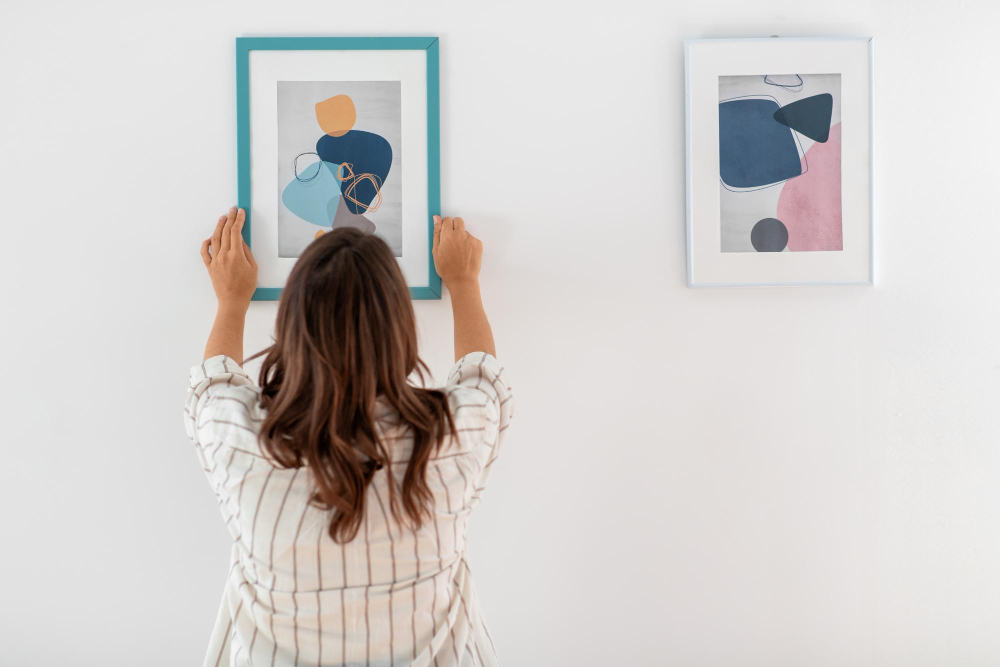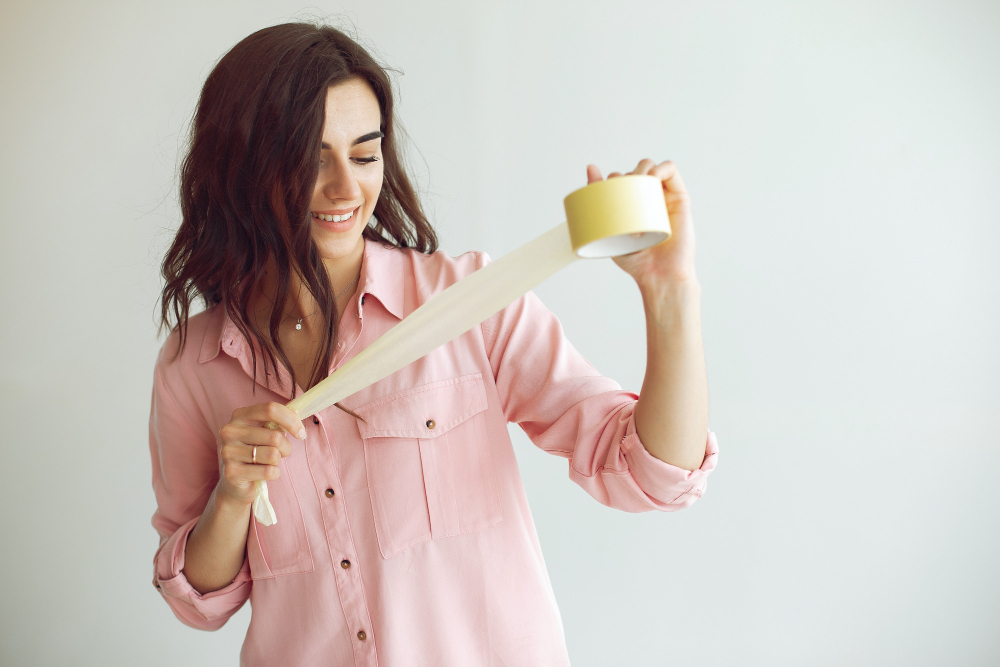
Hanging art on plaster walls is a great way to add character and style to your home. However, if done incorrectly, you could end up with cracks, holes, or even damaged plaster. Unlike standard drywall, plaster is more fragile and prone to chipping, meaning it’s important to use the right techniques when installing artwork.
Many homeowners assume they can simply hammer a nail into a plaster wall like they would with regular walls, only to find the plaster crumbles, or the nail doesn’t hold securely. To help you achieve a professional and damage-free display, we’ll walk you through five common mistakes to avoid when hanging art on plaster walls—and what to do instead.
Mistake #1: Using the Wrong Type of Hooks or Nails

1. What Happens When You Use the Wrong Hooks?
- The plaster may crack or crumble, creating messy damage around the nail hole.
- The nail may loosen over time, causing artwork to fall.
- Repeated attempts to insert a nail can weaken the surrounding plaster, making future repairs harder.
2. The Right Way to Hang Art on Plaster Walls
- Use plaster picture hooks with thin, sharp nails designed to penetrate plaster without cracking it.
- For heavier frames, opt for masonry anchors to provide a stronger hold.
- If you’re hanging particularly heavy artwork, use toggle bolts or wall anchors to ensure long-term stability.

Mistake #2: Drilling Without Preparation
Plaster requires careful handling when drilling, as rushing into it can cause cracks, excess dust, and weak anchor points.
1. Why You Should Never Drill Into Plaster Unprepared
- Plaster is brittle, and drilling too fast can cause chunks to break off.
- Excessive drill speed generates heat, which may damage the surrounding area.
- Using the wrong drill bit can lead to unstable holes that don’t hold screws properly.
2. The Right Drilling Method
- Place a piece of painter’s tape over the drilling spot to minimise chipping.
- Use a masonry or carbide-tipped drill bit, as regular bits struggle with dense plaster.
- Drill slowly and steadily to avoid vibrations that could weaken the surrounding area.
- For extra stability, use wall plugs or anchors to ensure a firm hold.
If you’re working with delicate or heritage plaster walls, consulting a professional may be the safest option.
Read also : 5 Common Types of Ceiling Damage and How to Fix Them
Mistake #3: Ignoring Wall Studs and Support
Many homeowners assume they can hang any artwork anywhere, but failing to locate wall studs can result in weak support and potential damage.
1. Why Wall Studs Matter
- Wall studs provide a strong anchor point, preventing heavy artwork from falling.
- Without proper support, plaster alone may not hold large or heavy frames securely.
- Hanging artwork without considering weight distribution can cause stress fractures in the plaster.
2. How to Hang Artwork Without Damaging Plaster
- Use a stud finder to locate wooden beams behind the plaster for added support.
- If no studs are available, consider using toggle bolts or French cleats for extra stability.
- When hanging heavy artwork, use multiple anchor points to distribute weight evenly and prevent strain on the wall.
Mistake #4: Using Adhesive Strips on Textured Plaster

Many homeowners assume adhesive strips are a damage-free alternative for hanging lightweight art. However, plaster walls have a different texture and porosity compared to drywall, making adhesive strips less reliable.
1. Why Adhesive Strips Don’t Always Work on Plaster Walls
- Uneven or textured surfaces prevent the adhesive from fully sticking.
- Over time, strips may lose their grip, causing artwork to fall unexpectedly.
- Removing adhesive strips can sometimes pull off paint or plaster, leaving visible marks and damage.
2. The Best Alternative for Hanging Lightweight Art
- If using adhesive strips, choose heavy-duty options designed specifically for textured surfaces.
- Try hook-and-loop fasteners for small, lightweight pieces.
- For a more secure hold, consider using plaster-friendly hanging systems that don’t require drilling.
Mistake #5: Neglecting Weight Distribution and Balance
Even if you’re using the right hooks and supports, improper weight distribution can still lead to unstable or uneven artwork.
1. What Happens When Weight Distribution Is Ignored?
- Frames may tilt or shift over time, ruining your display.
- Too much pressure on one point can weaken the plaster, leading to cracks.
- Heavy frames may pull out of the wall, causing expensive repairs.
2. How to Ensure Proper Balance
- Measure and mark your placement before drilling to ensure everything is aligned.
- Use multiple hooks or anchors to spread the weight evenly.
- For large or panoramic artwork, consider installing a hanging rail system for better support.
Need expert advice or professional assistance for your plaster walls? Whether you’re hanging artwork, repairing damage, or upgrading your ceilings, our team is here to help!

Conclusion
Hanging art on plaster walls may require extra care, but by avoiding these five common mistakes, you can achieve a secure, damage-free, and professional-looking display. Using the correct hardware, drilling with care, and distributing weight evenly will help keep your walls intact while ensuring your artwork stays in place.
If you’re working with delicate, older, or textured plaster, taking the right precautions will prevent cracks, chips, or instability. And if you’re unsure, seeking expert advice can save you from costly mistakes.
With the right techniques and tools, you can confidently showcase your artwork and transform your space without damaging your walls. Start decorating today with the peace of mind that your plaster walls will stay secure and stylish!